"Eugène Galien Laloue signé Léon Dupuy ( 1854-1941) " Scène de port animé " Grand peintre parisien, Cortès, Barnoin, Smith..."
Very beautiful oil/panel by Eugène Galien-Laloue signed with one of his pseudonyms L.Dupuy representing a port scene, signed lower right. Format outside frame 15.5x21cm This is a superb impressionist composition by Eugène Galien Laloue who signs here with his pseudonym L.Dupuy a magnificent port scene, perhaps Rouen, with sailboats, steam tugboat, crane of port. This scene is very typical of his work, of great finesse of execution thanks to a most precise drawing, a powerful touch and a most subtle coloring, also very typical of Galeien-Laloue, with browns, grays , black, white enhanced by a few touches of green, red and yellow. Galien-Laloue's port scenes are probably the most successful and therefore the most sought after after his famous animated views of Paris. Eugène Galien-Laloue, common name of Eugène Gallien Laloue, also known under the pseudonyms of Léon Dupuy, Eugène Dupuy, Juliany, Eugène Galiany, Jacques Liévin, Eugène Lemaitre, Maurice Lenoir, Dumoutier and A.Languinais, is a painter and French engraver born in Paris on December 11, 1854 and died in Chérence on April 18, 1941. He is famous for his Parisian urban landscapes. His father, the painter and theater decorator Charles Laloue, married Marie Eudoxie Lambert in Paris at Batignolles on December 29, 1853. Eugène Gallien Laloue was born on December 11 of the following year in Montmartre, rue Léonie. He was baptized the following January in the parish of Saint-Pierre de Montmartre. He was a student of Léon Germain Pelouse (1838-1891), painter of the Barbizon School, of whom he was influenced but without being part of it. After the death of his father in 1870, he had to leave school to look for work, being the eldest in a family of nine boys. His mother places him with a notary. Cheating on his age, he enlisted to fight in the War of 1870. In 1874, he lived on rue de Clignancourt, he was recruited by the French Railway Company to draw the route from Paris to the provincial stations; he took the opportunity to paint the surrounding landscapes, then the districts of Paris, of which he produced a considerable number of gouaches, taking care to respect the outline of the perspective of the buildings. He varies the tone of the sky, the appearance of the trees and the lighting according to the seasons by animating the places of the characters, particularly liking the effects of wet sidewalks in the rain or snow. His work is also closely linked to the village landscapes of the Ile-de-France countryside. In 1874, he stayed in Fontainebleau where he painted sunsets and sunrises, as well as scenes of farmyards and farmyards in Samois-sur-Seine, in the company of Charles Jacque and Léon Dupuy, an artist who will not make a career, but whose name Eugène Galien-Laloue will take as a pseudonym, giving him a second life to make him known in artistic circles. On the Butte Montmartre, he painted The Montmartre Fair, Place Pigalle, as well as the Sacré-Cœur construction site. In 1879, he married Flore Bardin (1861-1887) who gave him a son on July 3, 1880, whom they named Fernand. In 1892, he married for a second time the sister of his first wife, Ernestine Bardin, who gave him a daughter, Flore Marie Agnès, on February 4, 1893. That same year, he worked at the Bateau-Lavoir, but his solitary nature did not change. Don't give in to this place. When the First World War was declared, he was not mobilized due to his voluntary enlistment in 1870 and his age, but he made numerous drawings and watercolors of military scenes in 1914. His daughter left her father's home after his marriage in 1919. Ernestine Bardin died in 1925. He then married the third sister of his previous wives, Claire Bardin, in 1930. Widowed again in 1933, he moved in with his daughter Flore in 1935. In 1940 he left for exodus to Bordeaux, no longer able to paint due to a broken arm. He painted landscapes of Normandy, Seine-et-Marne, Marseille, Italy and Venice. The pictorial production of this artist, under his name or pseudonym, was plethoric, and his commercial success attracted imitators whose pastiches are common on the art market. He had two workshops in Montmartre: one at 4 rue Ravignan in 1877, and the second at 24 rue Houdon where he worked in 1886. In 1906 he moved to Fontainebleau. He died on April 18, 1941 in his daughter's country house, in Chérence (Val-d'Oise), and was buried in the municipal cemetery. This oil/panel is in very good condition, currently in its original state, uncleaned, delivered in a small old golden baguette. Guaranteed authentic work 

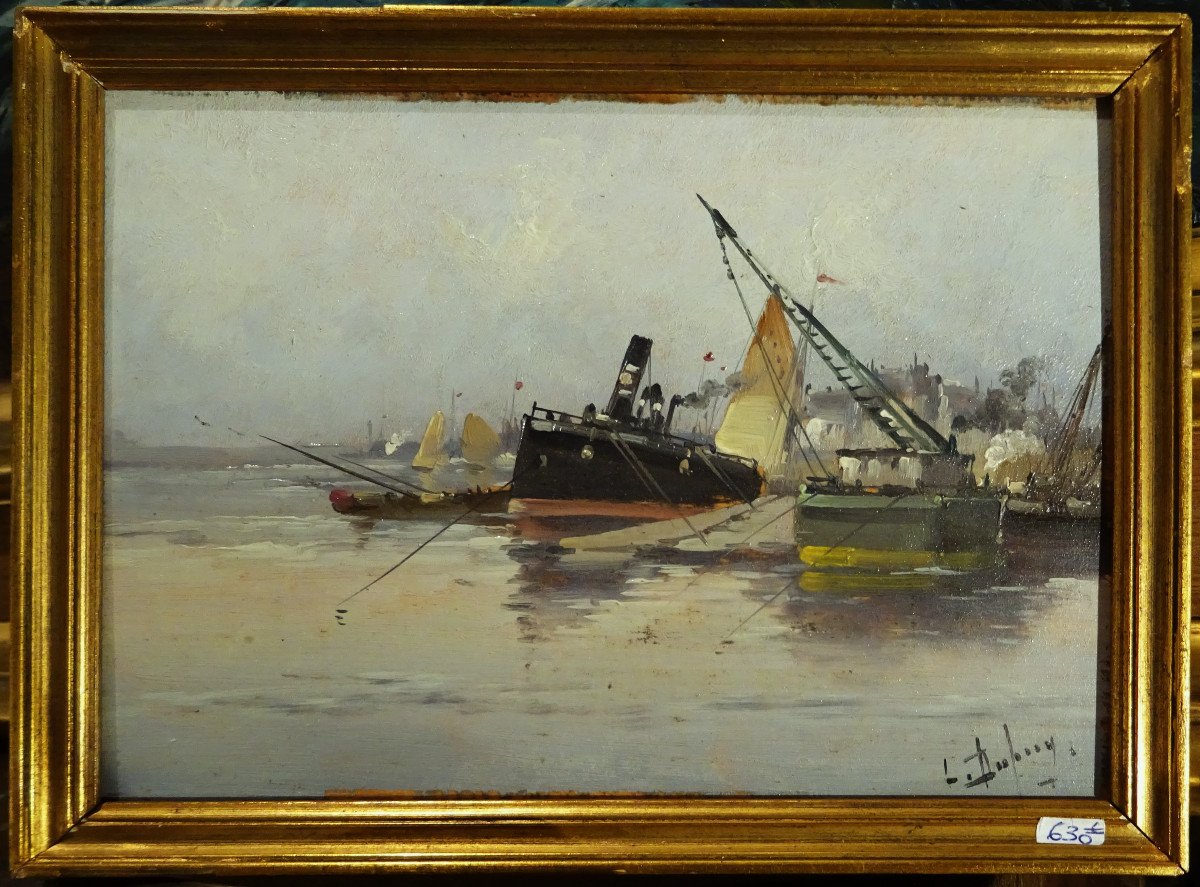
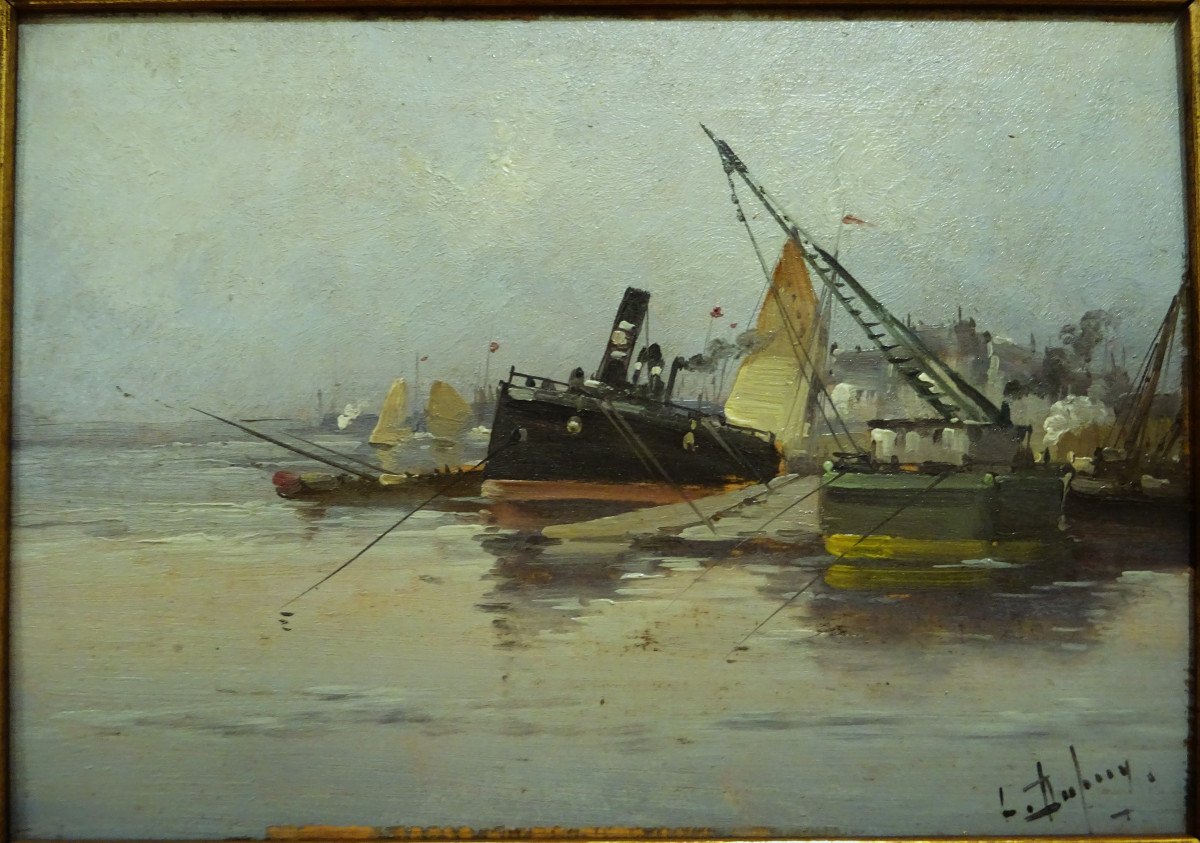
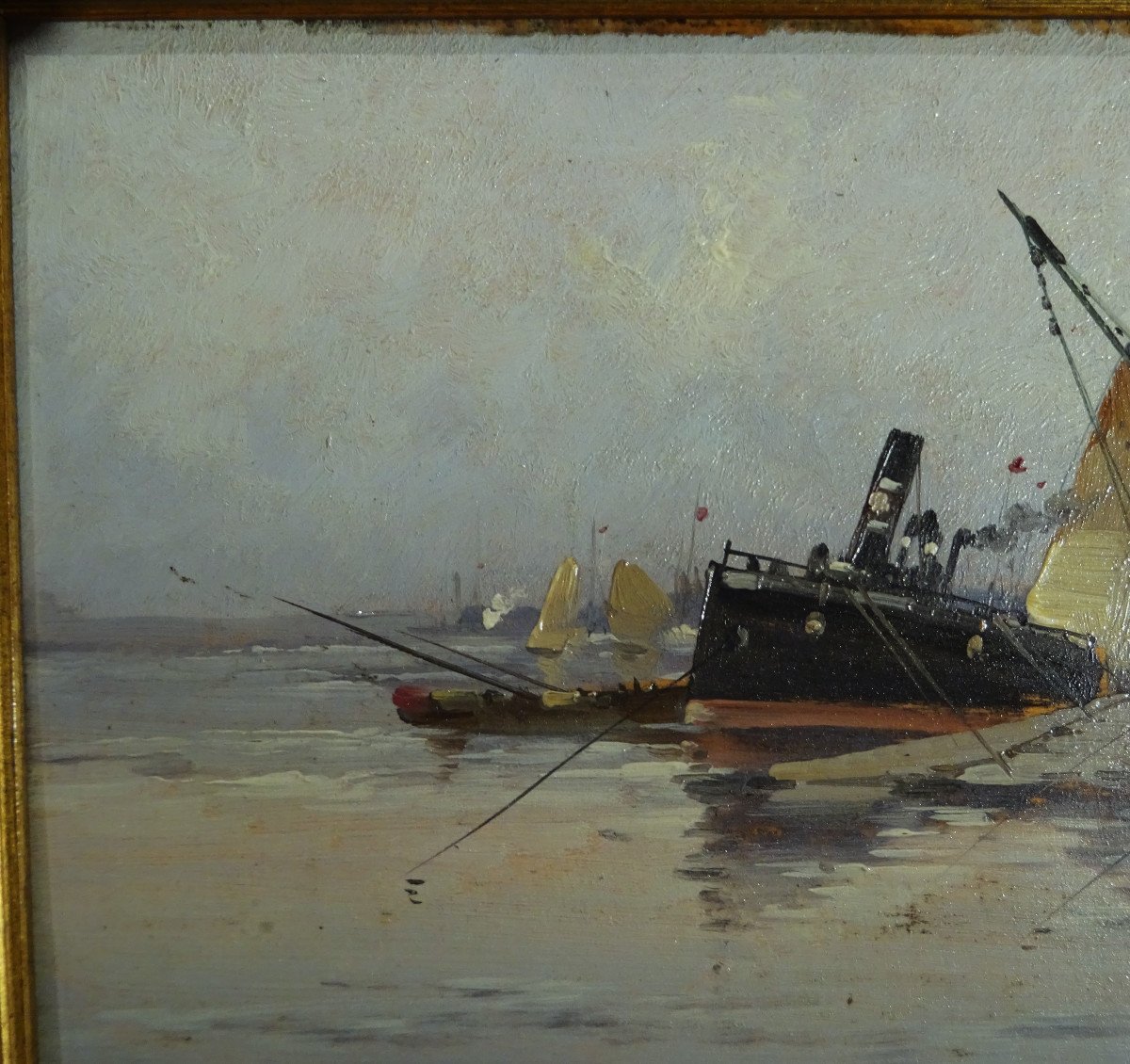
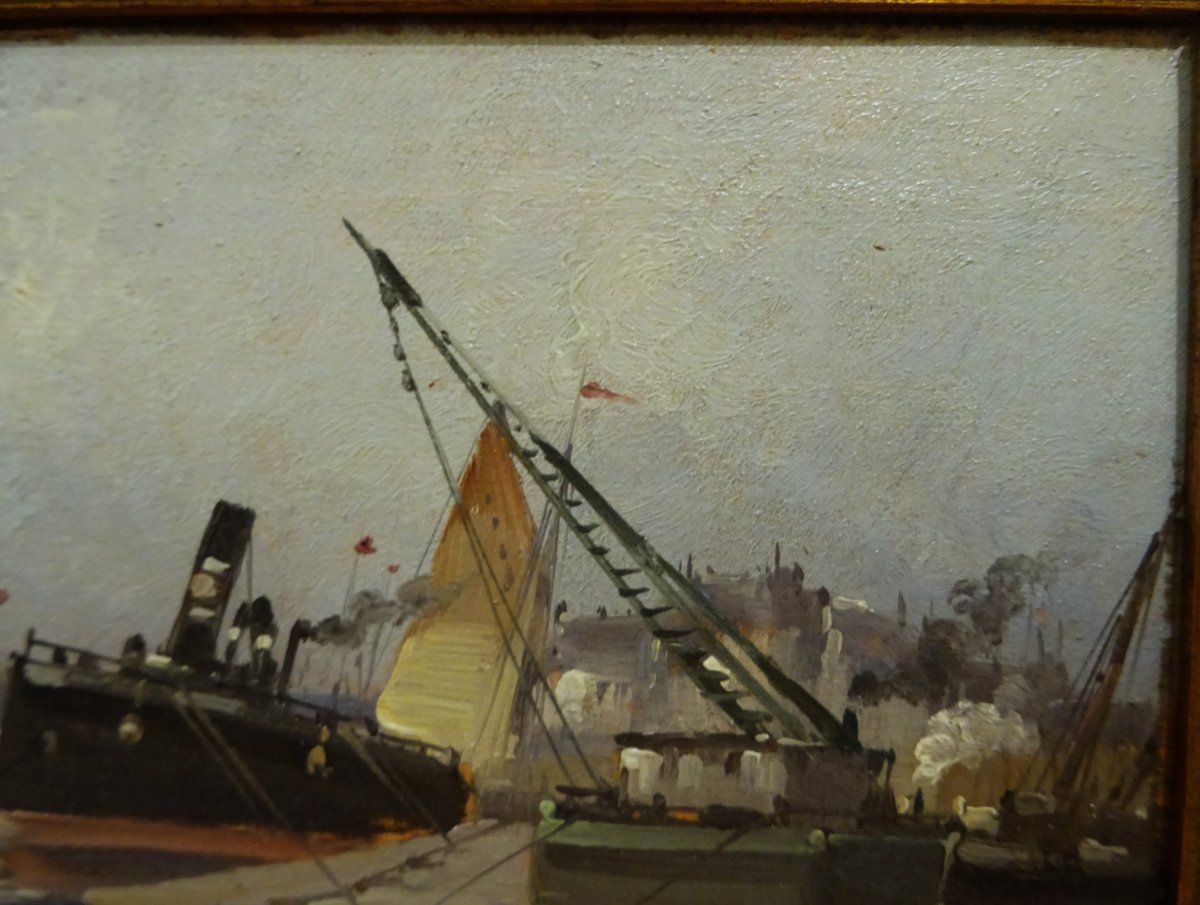
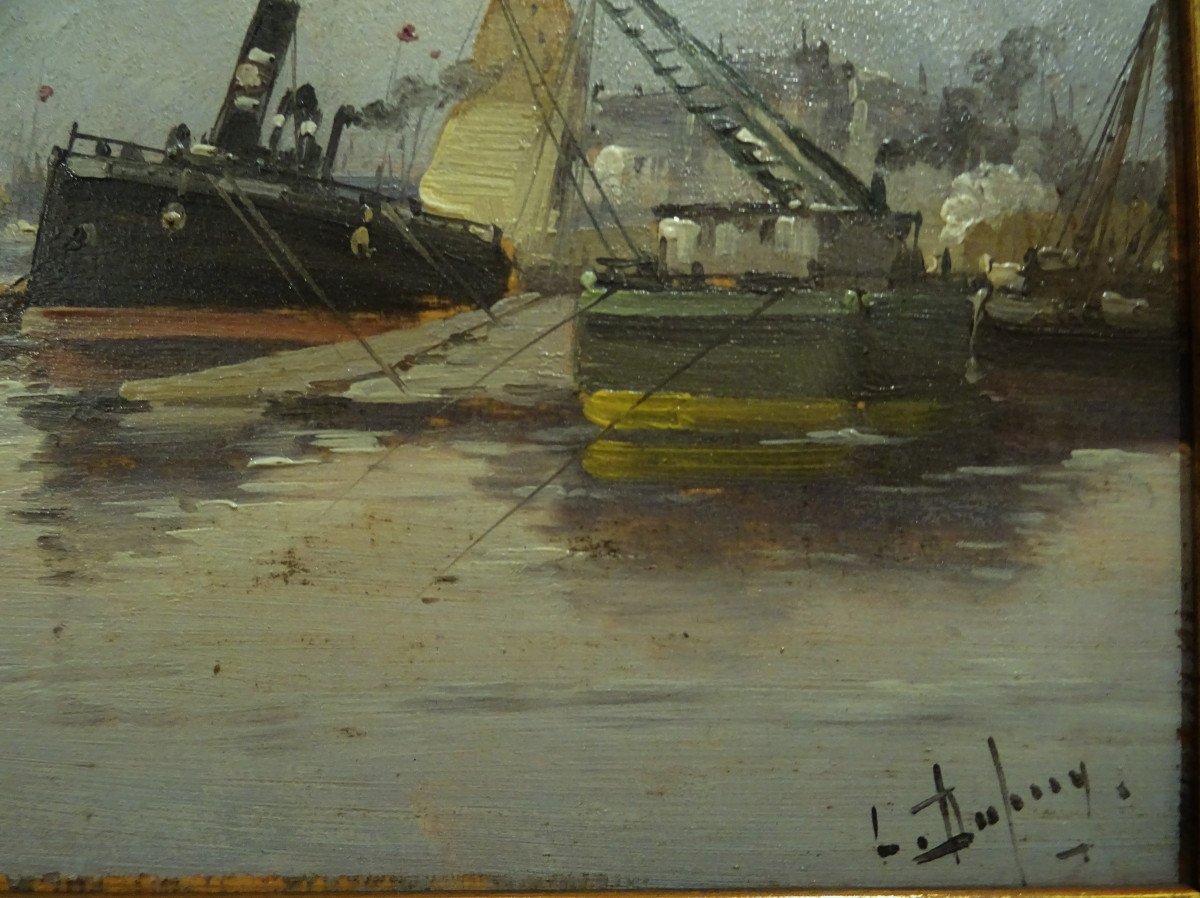
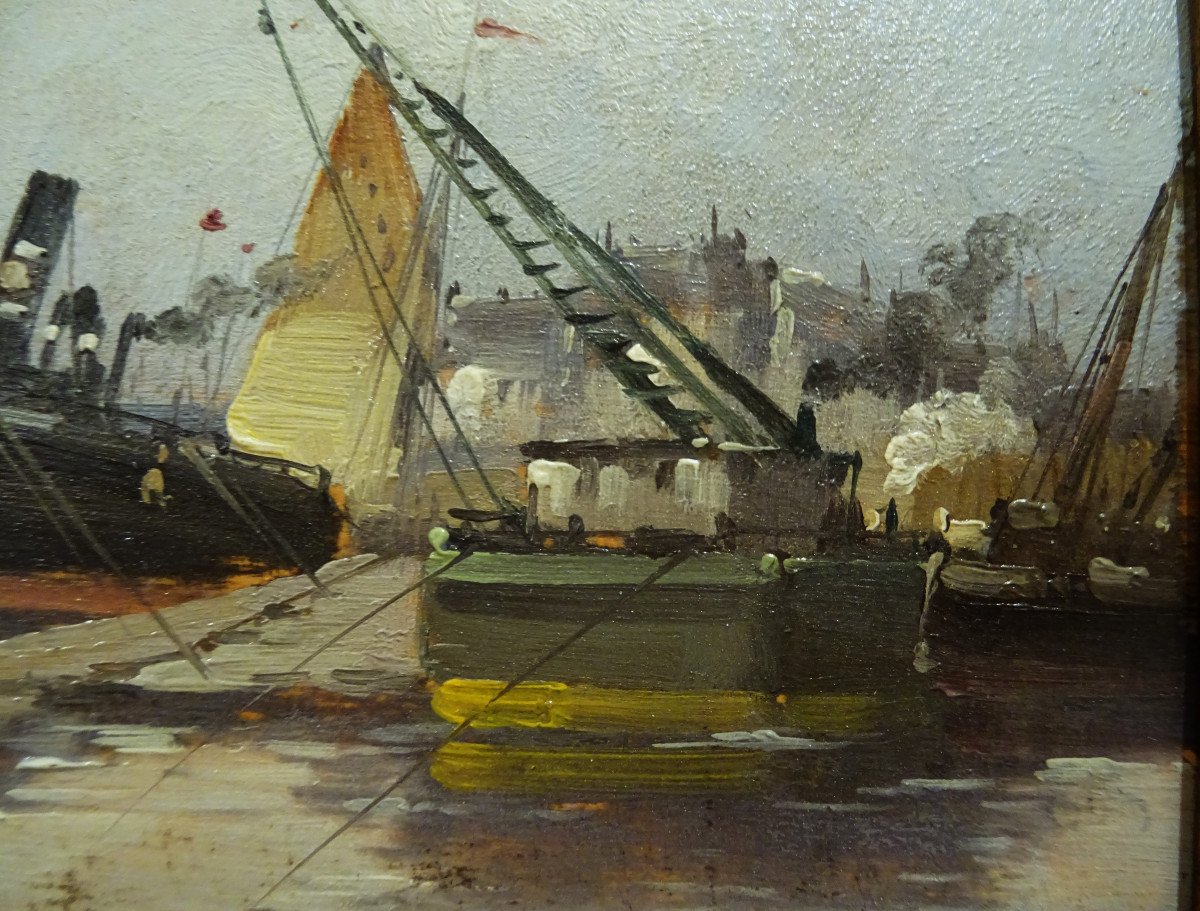

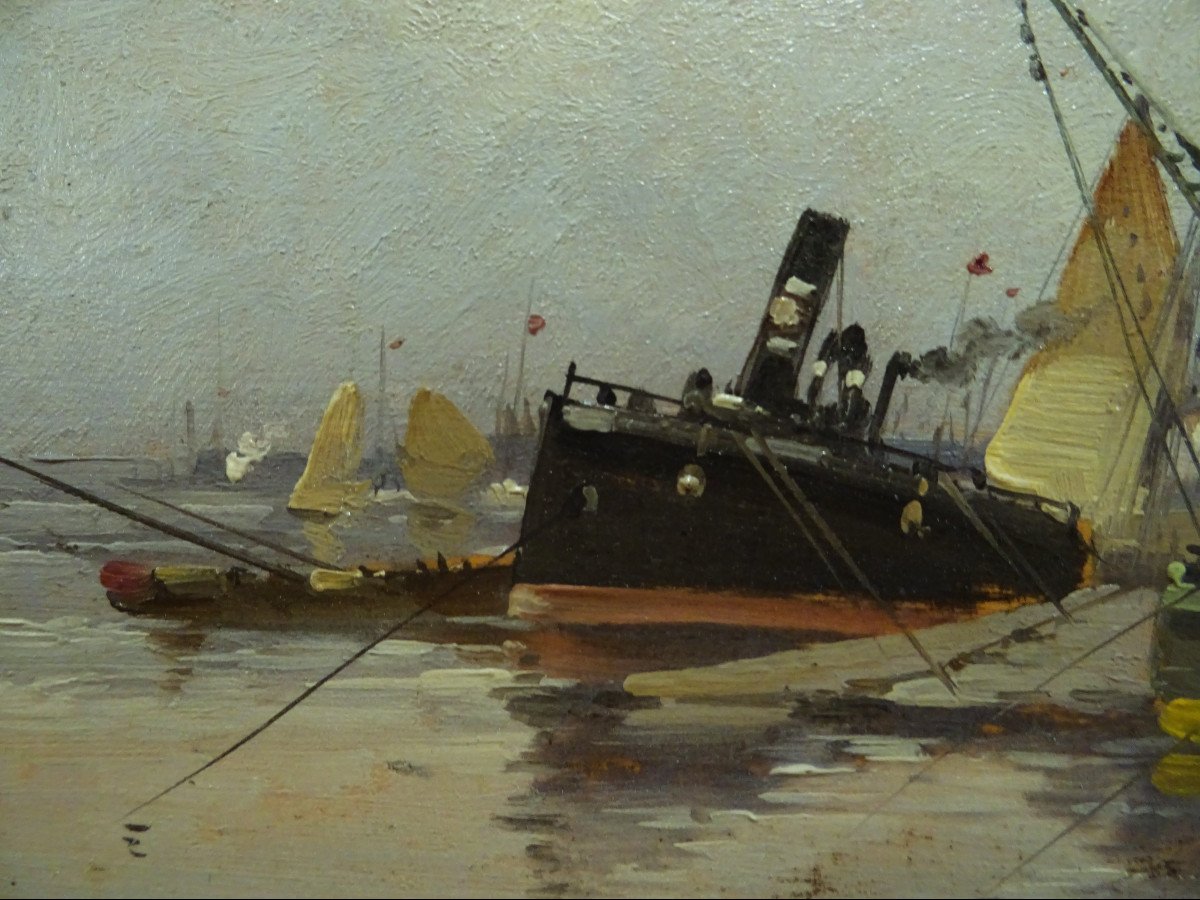
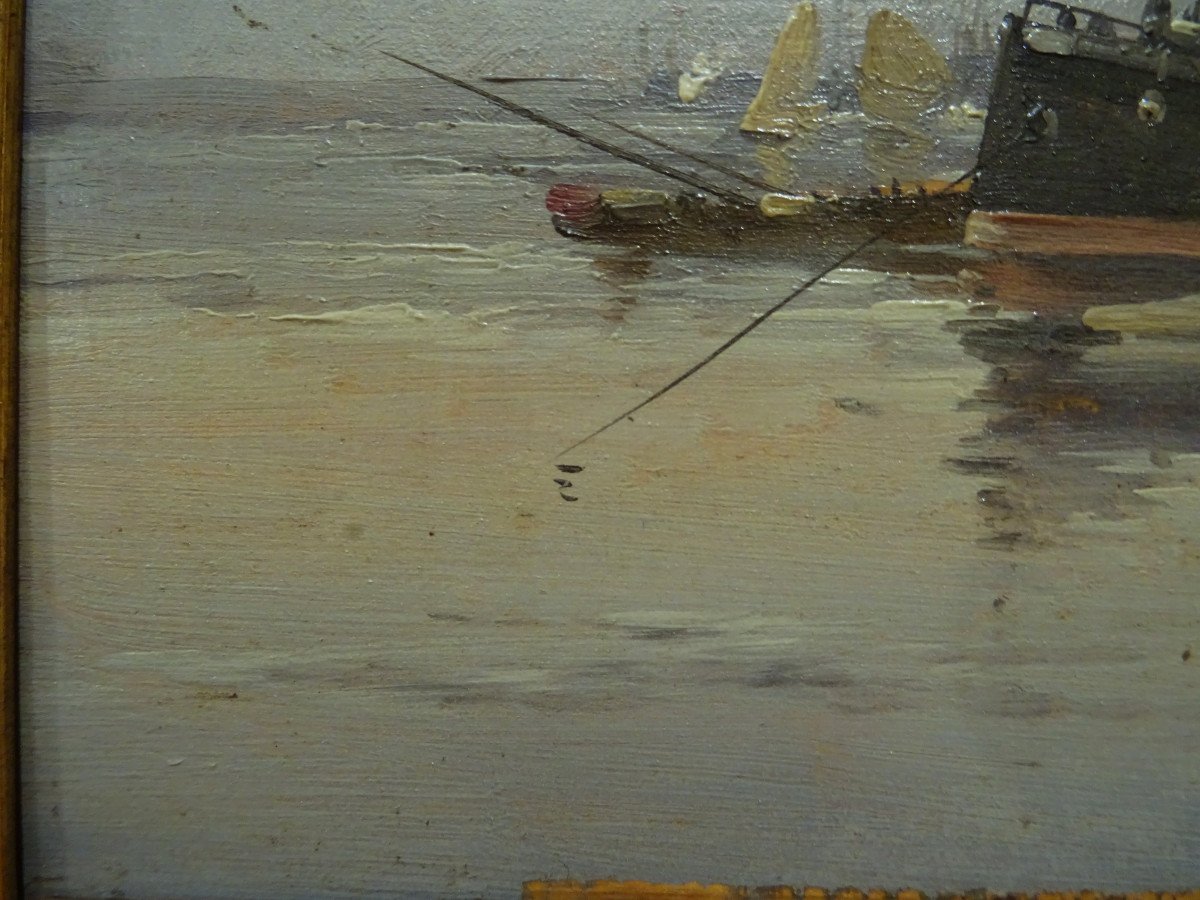
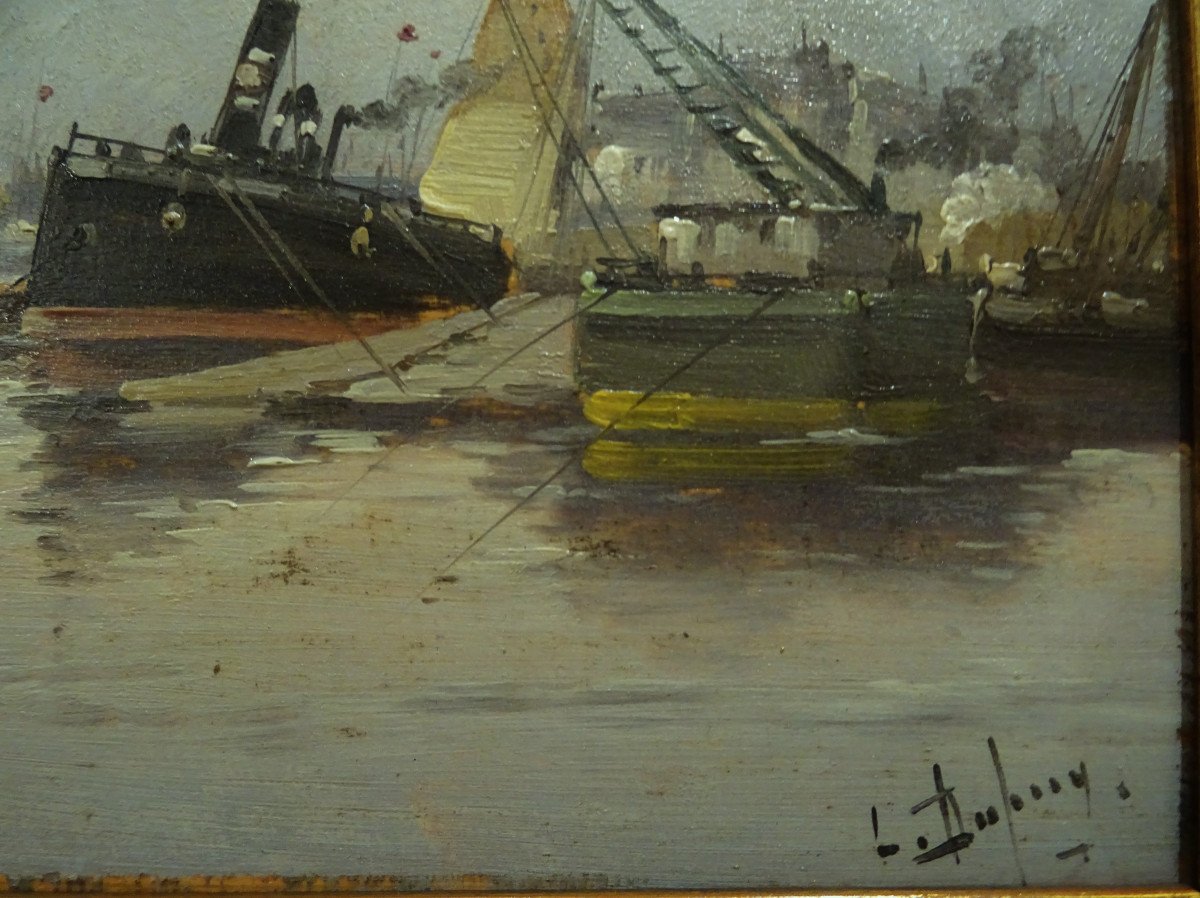
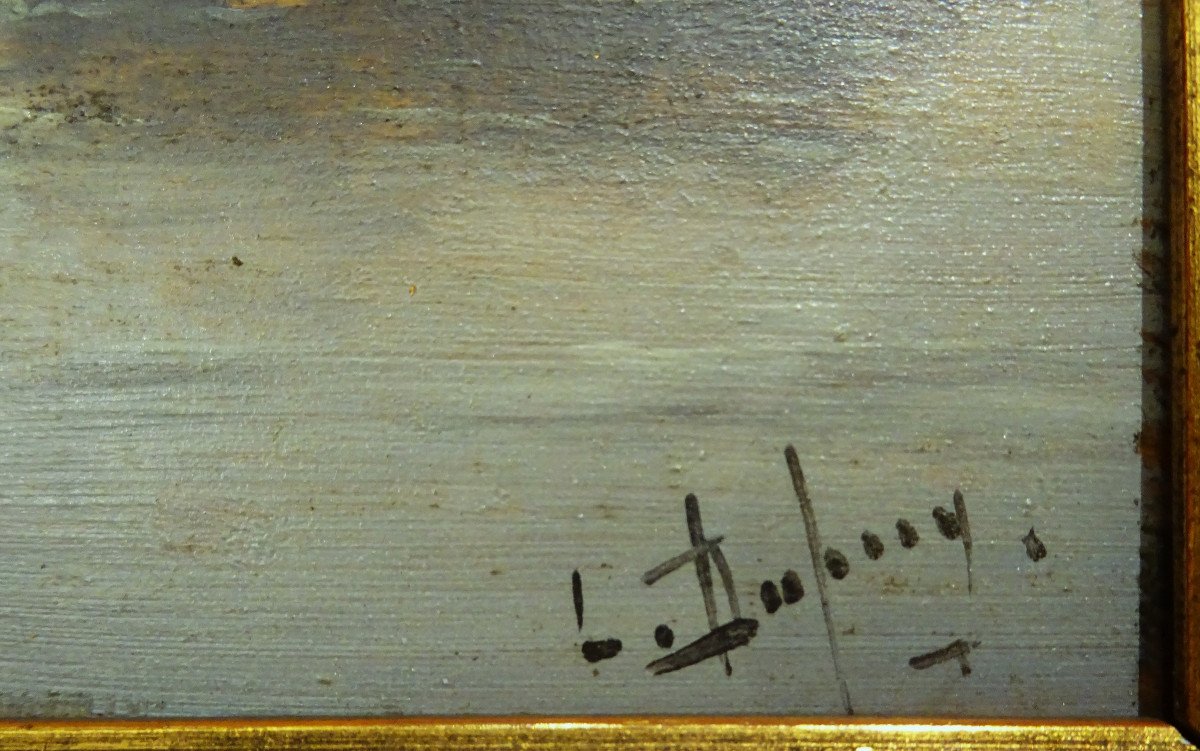
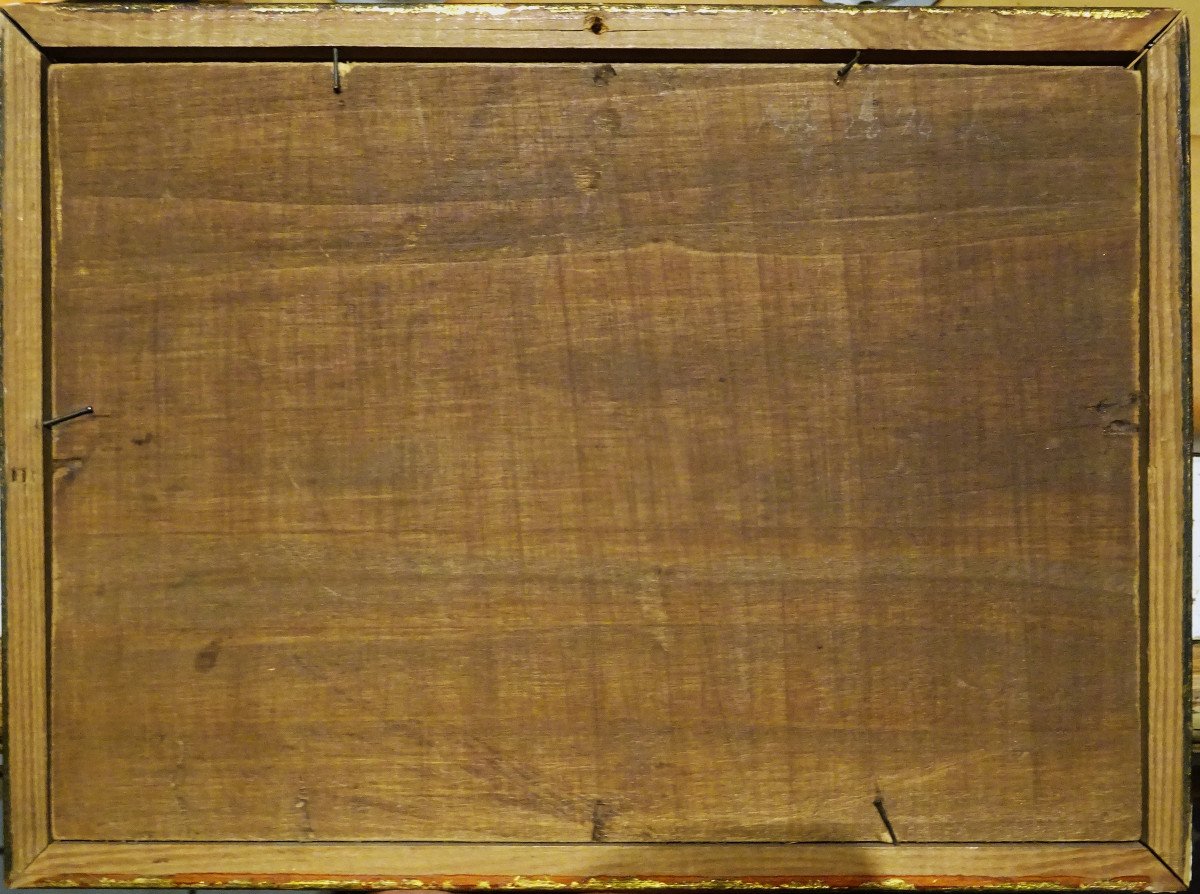
















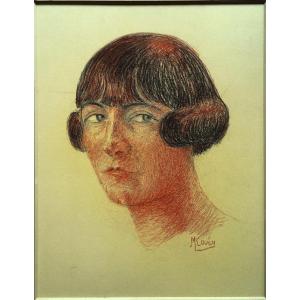

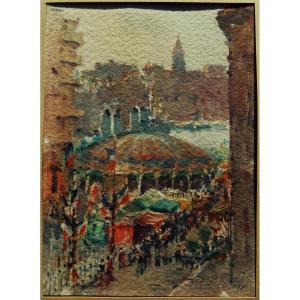
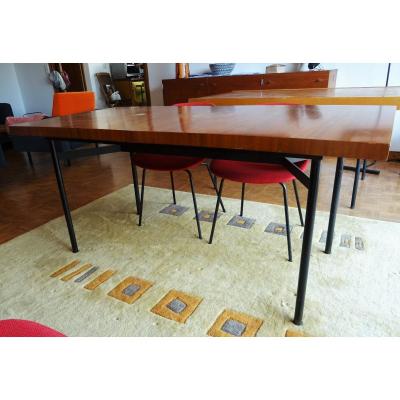

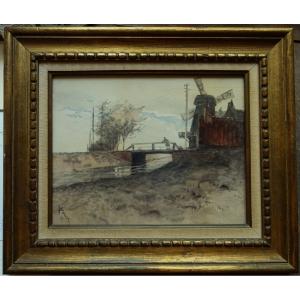



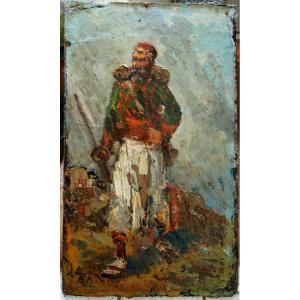
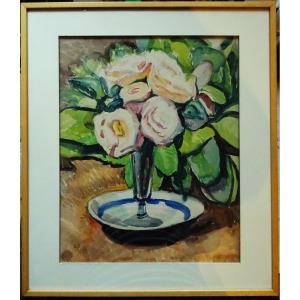

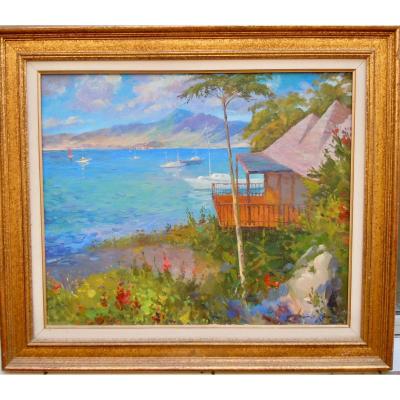
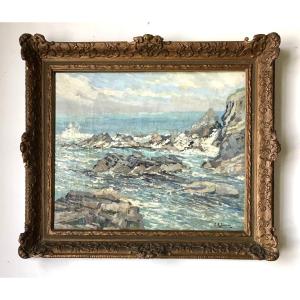


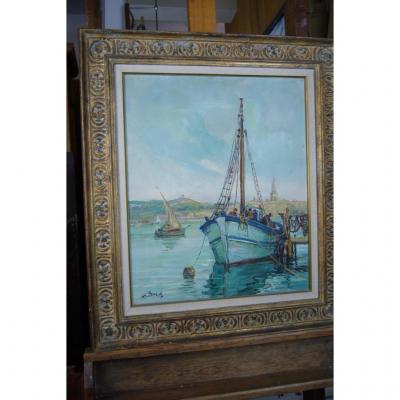




 Le Magazine
Le Magazine Rivista Artiquariato
Rivista Artiquariato TRÉSORS magazine
TRÉSORS magazine